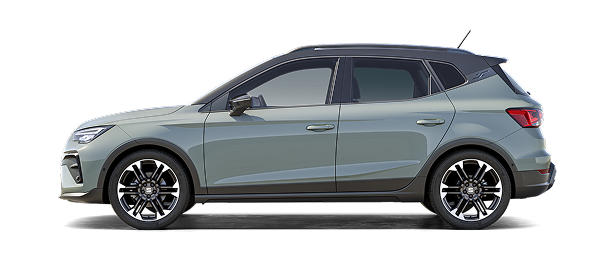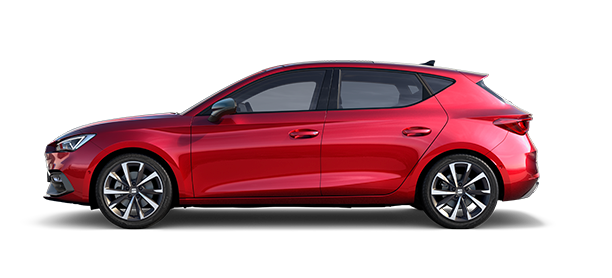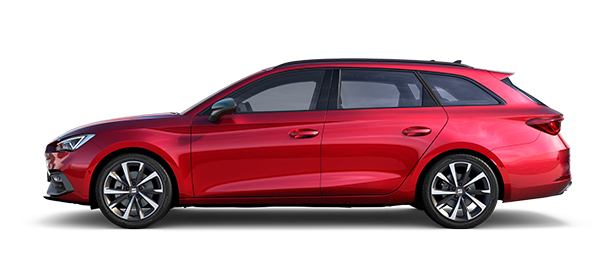End-of-Life Vehicles
This is our environmental vision.
End-of-Life Vehicles (ELV)
Raw materials and energy are limited assets on our planet. That’s why their sustainable use is a key objective for SEAT. We’re committed to moving towards a circular economy: at the end of its useful life, a product is no longer waste, but rather a source of materials that can be reutilised. Comprehensive environmental management is based on three factors: it starts with the design and production of vehicles, continues with the optimisation of SEAT's technical support and concludes with the correct use of the vehicle and its parts at the end of its useful life.
Recovery
Environmentally-respectful production and recycling-oriented design
Reutilisation, parts recovery, waste reduction and the environmentally-friendly treatment of vehicles are important aspects of end-of-life vehicle recovery.
To maximise these aspects, we take into consideration the following guidelines from the design phase through the development of every new car:
- Avoid the use of environmentally-harmful substances
- Use recycled materials as much as possible
- Give priority to the use of recyclable materials
- Design part connections that facilitate fast and simple disassembly
- Mark all parts to facilitate their separation
Waste reduction
Sustainable treatment of End-of-Life Vehicles
SEAT and other manufacturers have created the International Dismantling Information System (IDIS) to ensure the optimal and respectful environmental treatment of End-of-Life Vehicles and to meet the legal obligations of the End-of-Life Vehicles Directive. The IDIS provides pre-treatment and dismantling information for dismantling companies to assist them in producing the lowest environmental impact possible. The information database contains specific instructions on the most appropriate and environmentally-friendly treatment of each model – including the disposal of fluids such as oil, fuel, and cooling liquids – and the dismantling of the main recyclable parts.
For additional information, visit the website.
Process
When the last owner decides to terminate the life of a car, the vehicle is transferred to an authorised treatment facility to begin the vehicle management process.
Once all the appropriate paperwork has been completed, the vehicle is decontaminated. This process consists of separating components and hazardous materials in a controlled manner to avoid contamination of soil, water and air. Components such as oil, filters, brake fluids, batteries, catalysts and cooling liquids, among other components, are removed from the vehicle, stored in separate and sealed containers provided for this purpose, and managed according to the applicable legal requirements.
Once the vehicle has been decontaminated, it ceases to be a hazardous waste. The vehicle components are then recovered for valuation.
Metal fraction, both ferrous and non-ferrous, is separated from the vehicles and subsequently sold.
The remaining fraction contains a number of materials that can be used as raw materials once separated and treated: this is the general basis of so-called post-fragmented technologies.
Post-fragmented technologies represent an alternative to dismantling an End-of-Life Vehicle and form part of the SEAT strategy. In the near future, these technologies are expected to expand to different EU countries.
All SEAT models are designed, developed and produced in accordance with what is prescribed in the 2000/53/CE Directive, ensuring that all models achieve at least 95% recyclability. In addition, reconditioning of used parts and assembly (engine, gearbox) further contributes to the respectful use of existing resources and makes it possible to acquire parts for repairs at very convenient prices.
ELV take-back system
From 1st January 2007, the disposal of all qualifying vehicles becomes the responsibility of the manufacturer, regardless of the date on which the vehicle was first registered. This means that SEAT as a manufacturer, as well as SEAT importers, are responsible for ensuring that a qualifying End-of-Life Vehicle is taken to an Authorised Treatment Facility at no cost to the last owner.
Our importers have established a free take-back system that gives you the opportunity to have your SEAT taken back at no cost. This service meets all the requirements for manufacturers and importers, as prescribed by the Directive.
To find information about the drop-off locations in each member state, please visit your local SEAT website.
For additional information about the ELV Directive, you can read more at the following website





